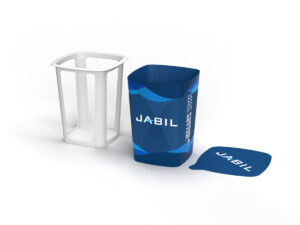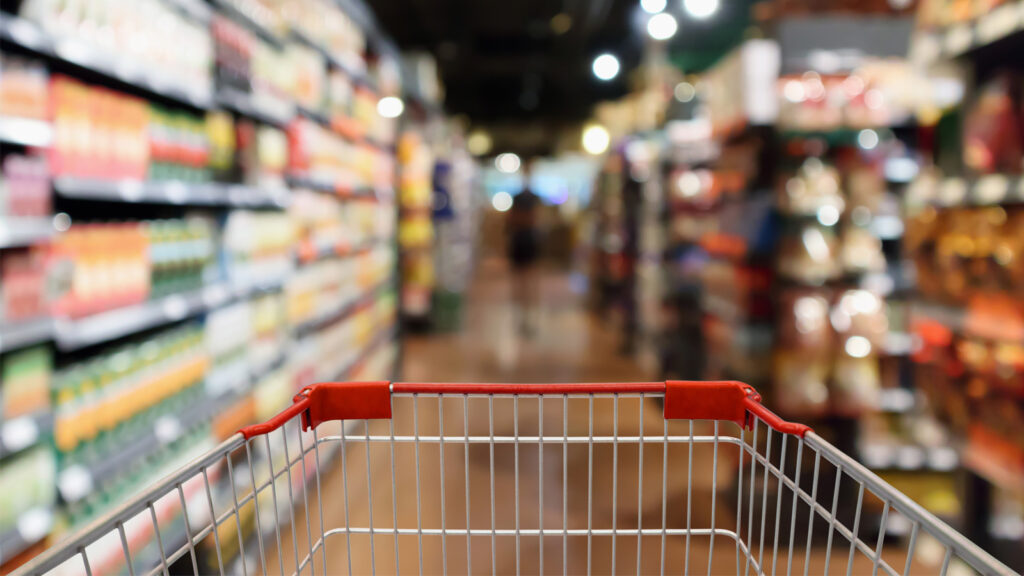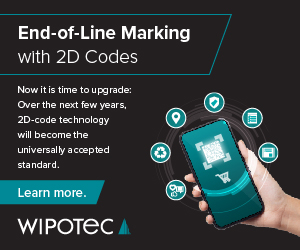Hybrid Packaging Boosts Sustainability Benefits
New Solutions Reduce Reliance on Single-use Plastics
By Jeff Minnette, Senior Director of Technology and Strategic Development, Jabil Packaging Solutions
As climate change and consumer demands for environmental action have dominated headlines globally in recent years, most companies have found it necessary to make sustainability commitments to cut their carbon footprints, increase recyclability and reduce their reliance on single-use plastic.
According to a 2021 United Nations Environment Program (UNEP) report, about 400 million tons of plastic are created each year. Only 9% of the plastic produced is recycled, while 12% is incinerated, and the rest ends up in landfills, oceans or streams. Although society has come a long way in terms of recycling messaging and awareness, we have much farther to go in overall sustainability.
According to the UNEP report, packaging contributes heavily to a consumer-packaged goods (CPG) company’s greenhouse gas emissions, comprising 10% of the company’s carbon footprint on the low end and up to 30% on the high end. A recent sustainable packaging trends survey involving 186 participants from CPGs was conducted by SIS International Research, and sponsored by Jabil, a global manufacturing solutions provider headquartered in the U.S. The survey found:
- 31% of respondents from food and beverage companies said their organization has at least piloted sustainable packaging options
- 47% say they are actively learning and have made good progress on their solutions
- Only 20% report having a fully mature program

FusePack combines the best features of rigid, flexible and fiber packaging. The rigid interior frame defines the shape and provides structural integrity while the flexible side walls contain and protect the product. Image courtesy of Jabil Packaging Solutions
Demand is growing for sustainable packaging
These stats show that CPGs are responding to the urgent need for more sustainable packaging options driven by stakeholders, governments and brands themselves. At the same time, food and beverage brands are facing unprecedented demand for packaged groceries. According to analysts at Research and Markets, flexible pouches are expected to experience the highest growth through 2028 — as the market is anticipated to be driven by a surge in demand for food delivery services, coupled with the rapid growth in single-serve and portable food packs.
These lightweight packages have applications across the food and beverage market, from chips and snacks to juice pouches. Their production requires, on average, less carbon, energy and water than more recyclable — and what is traditionally perceived as more “sustainable” — packaging options like paper and metal cans. But there is a catch. Flexible plastic cannot be recycled in most municipal recycling facilities. While the adoption of the flex pack material helps a CPG reduce their amount of overall packaging created, that material is only good for a single use.

FusePack is a new hybrid packaging solution created by Jabil for packaging foods such as snacks, candy, coffee, infant nutrition, spreads and dry ingredients like flour and sugar — replacing non-recyclable lightweight packaging or emission-intensive containers that typically hold these products. Image courtesy of Jabil Packaging Solutions
The benefits of hybrid packaging
One solution is hybrid packaging. Combining rigid and flexible substrates, hybrid packaging creates right-sized, high-barrier designs in fully or partially enclosed formats. This packaging solves many of the sustainability tradeoffs required by other formats such as plastic tubs, flexible pouches, metal cans or glass jars. A hybrid packaging solution allows brands to create lighter versions of heavy packages and recyclable versions of already lightweight packages, such as pouches for snack bags or zip-top packaging for dry ingredients. The ability to nest hybrid packaging in transit to filling sites, further improves the carbon footprint.
Hybrid packaging replaces non-recyclable lightweight packaging or emission-intensive containers that typically hold products such as snacks, candy, coffee, infant nutrition, spreads and dry ingredients like flour and sugar. For example, we developed a new hybrid package design combining the best features of rigid, flexible and fiber packaging. A rigid interior frame defines the shape and provides structural integrity, while flexible side walls contain and protect the product. Formats can be manufactured with custom ratios of virgin, compostable or bio-based materials (including molded pulp and fiber for 100% paper-based variations), enabling truly next-generation packaging formats that can be fully recycled in material recovery facilities (MRFs).
The benefits of hybrid packaging are innumerable. This technology offers maximum flexibility in shape, size and material; sustainability improvements through weight reduction and recyclability; omnichannel optimization thanks to a flexible yet strong design that holds up to the bumpy travel and changes in temperature that happen during shipping for e-commerce; better brand presentation on shelf with 360-degree graphics for maximum exposure; and supply chain efficiency with nested shipping and high-speed filling and volumetric efficiency.
 Understanding sustainability goals
Understanding sustainability goals
After deciding to incorporate hybrid packaging into your portfolio, the next step is to understand your sustainability goals. Hybrid packaging’s flexible material combinations allow CPGs to create a package that drives toward their goals.
Are your goals related to plastic reduction? You can create hybrid packaging that leverages a paperboard sidewall and industrially compostable inner frame. Are your goals focused on using more recycled paper and plastic in your products? You can design a hybrid package that has embedded post-consumer recycled (PCR) plastic within the rigid frame so the recycled material never comes in contact with the food inside the container. Looking to reduce your carbon footprint while maintaining recyclability? Try a mono-material polypropylene hybrid package that is lightweight yet fully recyclable.
Almost every package comes with some sort of tradeoff, whether its inefficient filling or a heavy carbon footprint to poor recyclability. Hybrid packaging, though, addresses these common challenges to provide CPGs with a next-generation format with the enhanced sustainability that consumers, and the environment, demand.
About the Author
Jeff Minnette is the Senior Director of Technology and Strategic Development for Jabil Packaging Solutions, and owns over 60 patents, primarily in consumer products packaging and processing. Jeff specializes in customer-focused innovation to commercialize disruptive technologies, and creates value by developing breakthrough products for Jabil customers undergoing significant change or extraordinary growth. Jeff has extensive knowledge of many packaging technologies, including injection, barrier, IML, co-injection, co-extrusion, thermoform and blow molding.








